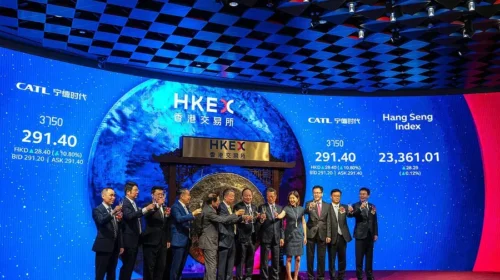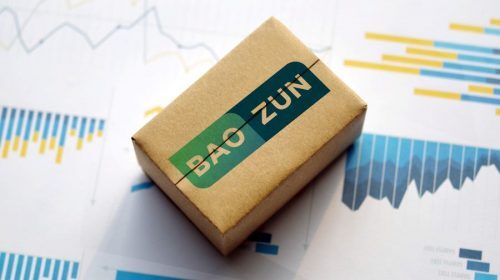IPO-Bound Outdoor-Wear Maker Beneunder Aims to Show It Can Shine Past Summer

The sun protection clothing and umbrella maker has expanded rapidly into year-round apparel and footwear, building its brand through heavy marketing spending
Key Takeaways:
- Hong Kong IPO candidate Beneunder’s revenue has grown rapidly on rising brand and product awareness supported by product diversification and heavy marketing spending
- The sun protection products maker is adding urban outdoor footwear and supplies to expand beyond the highly seasonal summertime sun protection business
By Molly Wen
Another peak sunning season has passed with the arrival of fall. But don’t tell that to Beneunder Ltd., a leading Chinese maker of sun protection products like footwear and umbrellas, which has just filed for a Hong Kong IPO. The untimely filing isn’t for a lack of trying, as Beneunder first applied to list this spring ahead of its peak season, but failed to pass its initial hearing and is now making a second try.
Despite the less-ideal timing, the company has some sunny news for potential new investors in its latest application filed last week, which shows it became profitable in the first half of this year. Its revenue is also exploding as it moves aggressively beyond its original base of sun-protection products.
Founded in 2013, Beneunder is positioning itself as China’s latest urban outdoor apparel and footwear company, aiming to offer products that are both functional and attractive. Third-party data cited in its preliminary prospectus shows it was China’s biggest sun protection clothing brand by both total retail sales and online retail sales last year, with 5% and 12.9% market share, respectively.
Beneunder has used social media and commercial live-streaming to become a hit among the younger set, gaining a name for its fashionable and “high-tech” products using celebrity endorsements and collaboration with key opinion leaders (KOLs) on popular platforms like Xiaohongshu, Douyin and Kuaishou. Its star product is a “double-sided little black umbrella,” whose high-tech UV protection fabrics and stylish appearance allow it to sell for as much as 300 yuan ($42) – up to six times the price of traditional sun umbrellas that are especially popular among Chinese women.
But businesses that rely on such products can never escape their biggest enemy, namely, seasonality. Aiming to overcome that drawback, Beneunder begun launching other urban outdoor products such as Qiujiao Light Martin Boots, Jielv Thick Sole Canvas Shoes and other less seasonally sensitive products in 2019, becoming more like a Chinese version of the popular U.S. North Face brand.
The strategy has not only made the company’s revenue more stable, but also turbocharged it in the process. The figure doubled year-on-year to 794 million yuan in 2020, and then tripled from that to 2.4 billion yuan last year. Over that period, revenue from umbrellas dropped sharply from 86.9% of the total in 2019 to just 20.8% in 2021. Meantime, revenue from apparel sales rose from 0.8% to 29.5% over the same period, becoming the largest single revenue contributor, showing that outdoor wear extends beyond the sun.
That diversification drive is likely to face headwinds in the years ahead as the company vies in a field already crowded with other trendy names. Those include domestic brands like Toread Holdings (300005.SZ) and Sanfo Outdoor Products (002780.SZ), as well as higher-end international brands like Columbia Sportswear Co. (COLM.US) and V.F. Corp. (VFC.US), owner of the North Face brand.
Mounting marketing costs
Recurrent Covid flareups in the first half of the year constrained consumer spending in China, with total retail sales down 0.7% year-on-year during that time. But you would never know by looking at Beneunder, whose sales soared 81.3% year-on-year to 2.21 billion yuan during the six-month period – almost equal to last year’s total.
The company’s gross margins have reached 50% or more for the past three and a half years, rising as high as 60.3% in the first half of this year. But after deducting marketing, administrative and other expenses, the company’s non-GAAP adjusted net profit margin looks far less impressive, coming in at just 5% to 5.6% over the period.
Beneunder’s profitability has also fluctuated dramatically over the last three years, swinging from a 5.47 billion yuan loss in 2021 to a 490 million yuan profit in the first half of 2022 due to changes in the fair value of its convertible redeemable preferred shares. But after adjusting for such one-time items, the company posted a 403 million yuan profit in the first half of the year and an adjusted net profit margin of 18.2%, which look quite solid.
As a new consumer brand founded less than a decade ago, Beneunder’s rapid rise owes in no small part to its big investment in marketing. The company’s distribution and selling expenses soared from 125 million yuan in 2019 to 1.1 billion yuan last year, accounting for 32.4% and 45.9% of revenue in those two years, respectively. During that period the company’s KOL partners also ballooned from 274 to 1,577, nearly 200 of those with over 1 million followers, significantly boosting its brand and product awareness.
New Chinese consumer brands like Beneunder and Yatsen Holding Ltd. (YSG.US), parent of online e-commerce social media site Perfect Diary, have risen rapidly in recent years on the back of aggressive marketing and use of online channels. But such fast gains come at a price. Hot new brands can quickly lose their luster once the marketing spending drops and trend-conscious young consumers look for the next big thing. That’s why Beneunder says it will maintain its high spending, which is one of the uses for funds raised from the IPO.
Competitive market
Marketing spending aside, expansion of its offline store network is another company priority as it works to ease its heavy reliance on online sales channels. Beneunder currently has 99 offline stores in 34 cities. But that network generated just 95.19 million yuan in revenue during in the first half of this year, accounting for a scant 4.3% of the company’s total.
Although Beneunder likes to emphasize its “black technology” in its marketing, bragging of core technologies such as airLoop fabric and UV protection yarn in its products, its R&D spending is actually quite low, totaling only about 20 million yuan in 2019. Even after the spending rose to 71.6 million yuan last year, it actually fell from 5.2% of total revenue to 3% over that period.
Beneunder has completed three rounds of financing since 2015, achieving a $3 billion valuation after its last round in February. Using that valuation and its first-half revenue to estimate a full-year figure gives the company a price-to-sales (P/S) ratio of 4.9 times. That compares with a 7 times ratio for Toread and 3 for Sanfo Outdoor, putting Beneunder right in the middle of the pack.
To subscribe to Bamboo Works weekly free newsletter, click here






